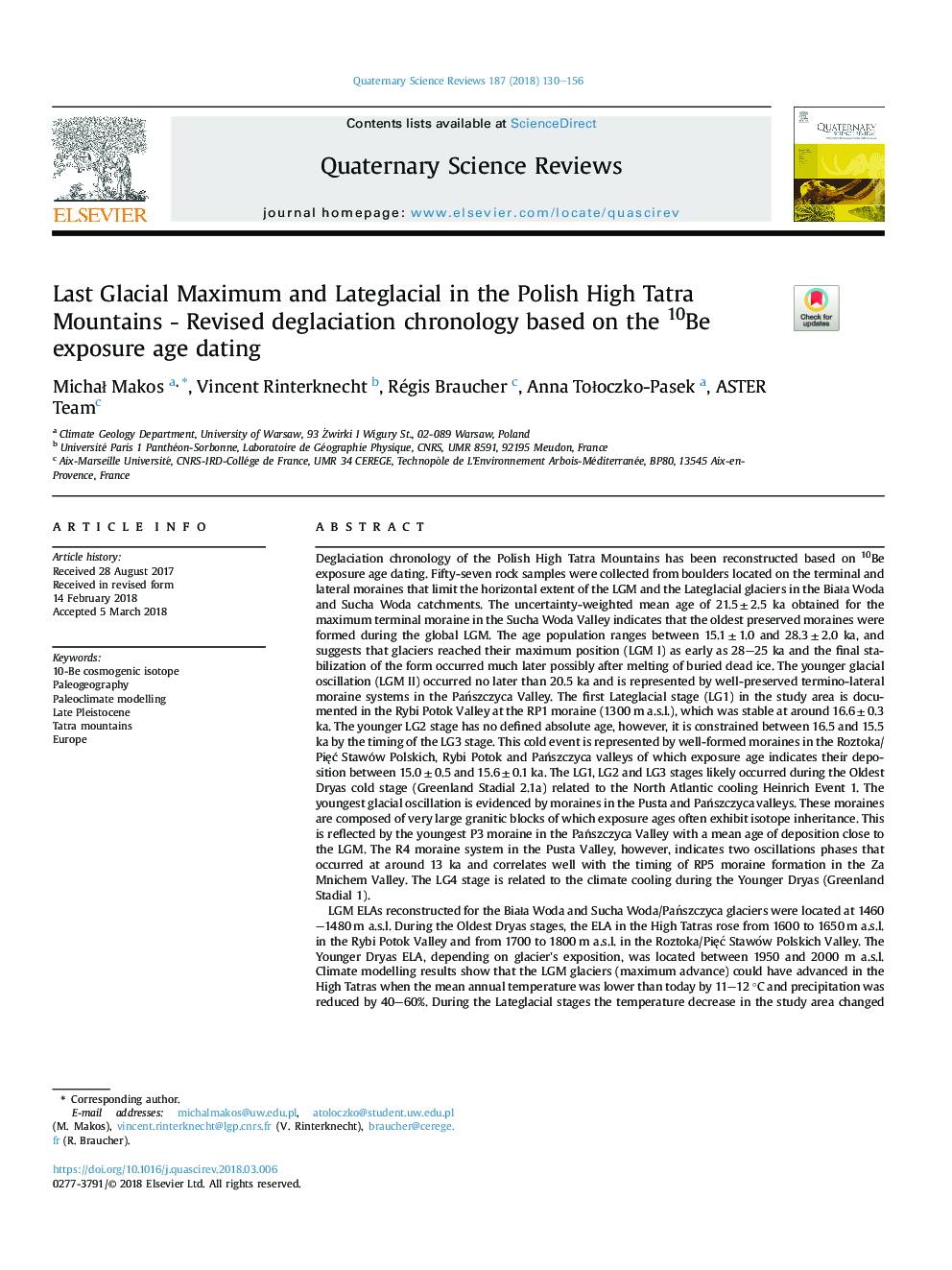| Article ID | Journal | Published Year | Pages | File Type |
|---|---|---|---|---|
| 8914864 | Quaternary Science Reviews | 2018 | 27 Pages |
Abstract
LGM ELAs reconstructed for the BiaÅa Woda and Sucha Woda/PaÅszczyca glaciers were located at 1460-1480â¯m a.s.l. During the Oldest Dryas stages, the ELA in the High Tatras rose from 1600 to 1650â¯m a.s.l. in the Rybi Potok Valley and from 1700 to 1800â¯m a.s.l. in the Roztoka/PiÄÄ Stawów Polskich Valley. The Younger Dryas ELA, depending on glacier's exposition, was located between 1950 and 2000 m a.s.l. Climate modelling results show that the LGM glaciers (maximum advance) could have advanced in the High Tatras when the mean annual temperature was lower than today by 11-12â¯Â°C and precipitation was reduced by 40-60%. During the Lateglacial stages the temperature decrease in the study area changed from 10â¯Â°C during the Oldest Dryas to 6â¯Â°C during the Younger Dryas and precipitation lowering decreased from â50% to â30% or even â10%, respectively compare to modern conditions.
Related Topics
Physical Sciences and Engineering
Earth and Planetary Sciences
Geology
Authors
MichaÅ Makos, Vincent Rinterknecht, Régis Braucher, Anna ToÅoczko-Pasek,
